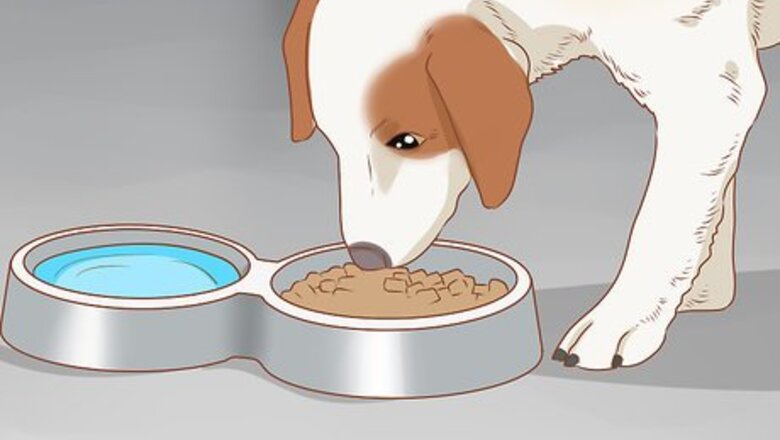
views
Providing for Your Dog's Basic Needs
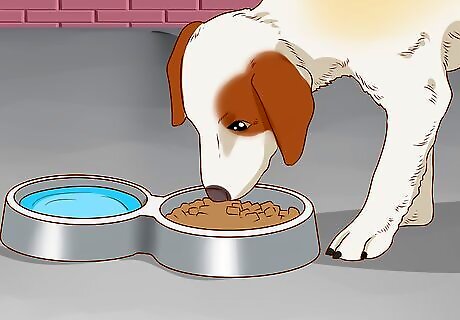
Give your dog fresh food and water. These fundamental needs can't be ignored, even for a day. Depending on their age, puppies need to eat 3 to 4 times per day. Full-grown dogs usually eat just twice per day. Fresh, clean water should be provided at all times, so your dog can drink whenever it gets thirsty. Pick out the right kind of food for your dog's size, age, and breed. Different types of dogs have different nutritional needs. Most dog food packages detail how much food should be given daily depending on the size of the dog. Make sure to buy food with high quality ingredients. Dogs have sensitive digestive systems and can become ill if they aren't fed high quality food. Don't feed dogs human food, especially junk food that's high in salt and sugar. A good rule of thumb is to look at the first ingredient on the dog food package. If it is a meat - not cornmeal -- this food will be higher in those essential proteins your dog needs daily. Consult with your veterinarian about how often your puppy or dog should be fed to meet its metabolic needs.
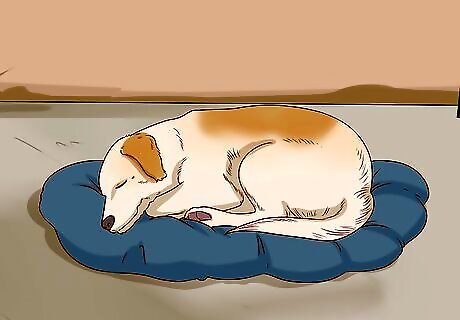
Make sure your dog has a cozy place to sleep. Dogs may be distantly related to wolves, but they're domesticated creatures who enjoy the creature-comforts of home as much as we humans do. Your dog needs a clean, dry, and warm place to sleep at night. Whether your dog sleeps indoors or outside, make sure it has a space that's sheltered from the elements with a regulated temperature. If your dog spends a lot of time outside, it needs a place to take shelter when it rains, snows, or gets too hot or cold. Do not leave your dog outside in inclement weather. Many dogs enjoy sleeping in kennels lined with comfy blankets with a few toys. Others prefer to sleep on a dog bed in their masters' bedroom, or in a special spot somewhere in the house.
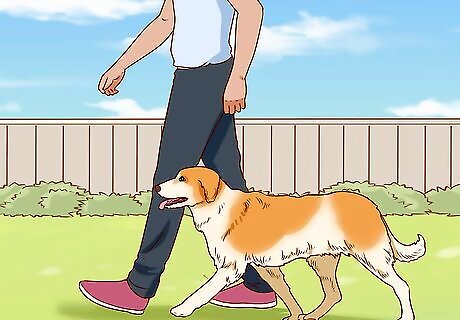
Allow your dog to exercise every day. Dogs, like humans, need to move around to stay fit and healthy. Some breeds need to exercise for hours every day, while others are fine if they only go outside a few times each day. It's important to understand the needs of your breed and meet them. If you have a high-energy dog, be sure it gets plenty of exercise. At the very least, walk your dog twice a day for 20 minutes. This is especially important if your dog has to stay cooped up in the house or apartment all day while you're gone. While you are walking your dog, make sure to know the leash law in the area. Do not let your pet off-leash unless the area is enclosed and your pet is protected from traffic. Dogs love going to dog parks and other facilities where they get the chance to run freely. However, be sure your pet is fully vaccinated before taking it to an area with other dogs. Diseases like parvovirus can stay dormant in the environment for several months putting unvaccinated puppies and dogs at risk when exposed to that environment.
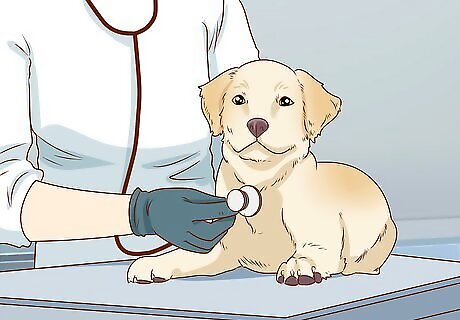
Take your dog to the vet regularly. Your dog should see a vet about once a year to stay updated on all the necessary shots and receive an annual checkup. If your dog shows symptoms of illness in between regular appointments, call the vet and take it in for a diagnosis. If your dog has not been spayed or neutered, consider having the surgery done. It's a measure recommended by the ASPCA as a way to prevent the population of stray dogs from growing. Your dog should receive a rabies vaccination as well as other mandatory shots. EXPERT TIP Colleen Demling-Riley, CPDT-KA, CBCC-KA, CDBC Colleen Demling-Riley, CPDT-KA, CBCC-KA, CDBC Canine Behavior Consultant Colleen Demling-Riley (CPDT-KA, CBCC-KA, CDBC) is a Canine Behavior Consultant and the Founder of Pawtopia Dog Training. With more than 20 years of experience, she specializes in creating and customizing dog management programs for dog owners. She is a Certified Pet Dog Trainer-Knowledge Assessed, Certified Behavior Consultant Canine-Knowledge Assessed, Certified Dog Behavior Consultant, and American Kennel Club Canine Good Citizen Evaluator. Colleen is a member of the International Association of Canine Professionals and has been a featured expert in national media including the New York Times, Woman’s Day, Readers Digest, Cosmopolitan, and Yahoo.com. Colleen Demling-Riley, CPDT-KA, CBCC-KA, CDBC Colleen Demling-Riley, CPDT-KA, CBCC-KA, CDBC Canine Behavior Consultant Call the vet for guidance if your dog is in pain. While you wait, create a quiet, comfy space for them to rest. Choose a less busy area of the house, like a crate or bed in the corner of the family room. Don't hesitate to call your vet immediately to find out what you should do.
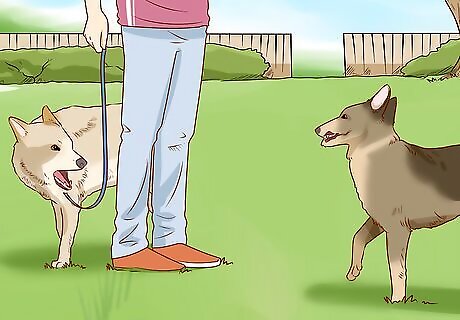
Keep your dog safe from harm. Part of your responsibility as a dog owner is to keep your dog safe, just as you would a child. That means keeping your dog leashed when you're around traffic, making sure your yard is fenced so your dog can't run away and get into a dangerous situation, protecting your dog from larger dogs, and generally keeping it out of harm's way. Microchips can help identify your dog if it gets lost. Many companies actually offer services that’ll notify you if your dog has run astray. For example, make sure your dog doesn't fight with a wild animal by keeping it on a leash in areas where leash laws are in effect. Many wild animals carry dangerous diseases like rabies and leptospirosis. It is a good idea to bring your dog to a veterinarian if your dog comes into contact with a wild animal. Keep your house and yard free of dangerous objects your dog might try to eat, like electrical wires. Puppies are the most likely to chew on dangerous objects. A good way to make sure they stay safe is to place them in a small, puppy-proofed kennel area when you are not there to monitor their actions. Use this time to train them to chew on their toys only.
Training Your Dog
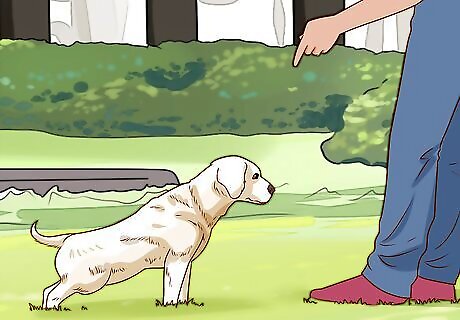
House train your dog. You and your dog will both be happier if you spend time on proper house training. It's important to start early, when the dog is still a puppy. All puppies have accidents in the house at first, but with patience you can teach yours to go to the door when it needs to be let out. Reward your dog for going to the bathroom outside each and every time. Eventually, it will begin to understand that going outside is preferable to going inside. Take your dog to the same spot outside every time, so it will associate that place with going to the bathroom.
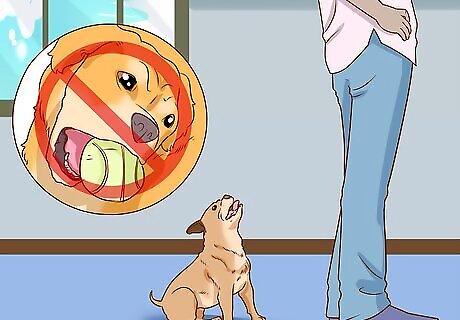
Teach your dog to play nicely. If your dog likes to play-bite and bark a lot, you can train it to play more nicely. The most effective trick is to ignore your dog when it exhibits bad behavior, since dogs usually bite and bark for attention. When you withhold attention, your dog will realize the better way to get noticed is be well-behaved. If your puppy insists on trying to bite when you are ignoring it, simply walk away from the puppy. Reward good behavior with treats and praise.
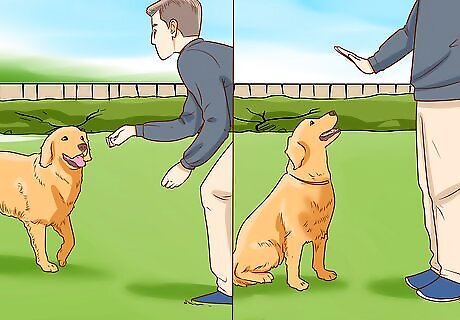
Teach your dog basic commands. Learning how to sit, stay, and come are important commands for any dog. Your dog will be more obedient and you'll be able to take it out more often if you know it will come when called. A dog who knows how to sit, stay and come is safer than one who won't listen. Any dog can learn these basic commands. Remember to use patience and positive reinforcement when you're training your dog. Here are the commands every dog should know: How to sit How to stay How to come
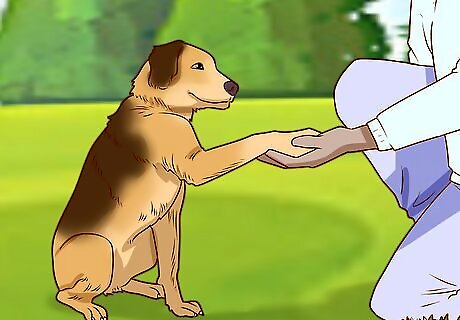
Teach your dog a few fun tricks. Dogs are excellent at learning how to do tricks, and teaching your dog how to do them can be a great bonding experience. Not every dog can do back flips or ride a pony, but most can do a few tricks, especially when they're rewarded with treats. Here are a few tricks that most dogs have no trouble mastering: Rolling over Begging Shaking hands Playing dead Fetching
Having a Fun-loving Relationship
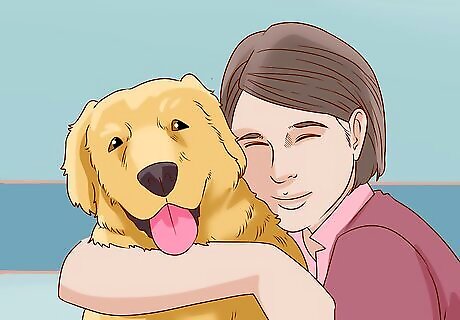
Be kind to your dog. If you're mean to your dog, your dog will become afraid of you. Dogs look up to their owners like little kids look up to their parents. Treat your dog lovingly by speaking to it in a pleasant voice, spending time petting and cuddling, and showing lots of affection. When your dog is good, give it a treat and a belly scratch. Your dog will reward you with endless affection in return. Research shows that dogs enjoy being petted even more than receiving praise. Pet your dog every day to show your dog how much you care.
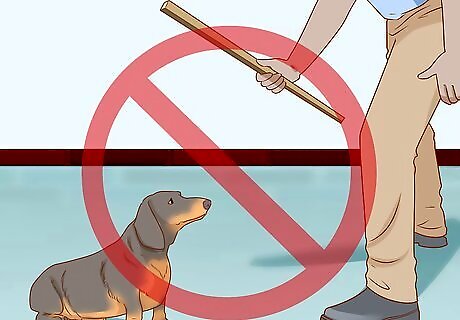
Don't punish your dog. Yelling at your dog or hitting your dog is always a bad idea. It's cruel and also ineffective. Dogs who get treated meanly end up confused and scared; they don't know what you want them to do, so they either act out or cower. Never punish your dog for doing something wrong. Instead, reward your dog for what it does right to build trust and help your dog see the right thing to do. Positive reinforcement is the best way to get your dog to behave the way you want. Reward good behavior. Punishing your dog creates fear and general discontent.
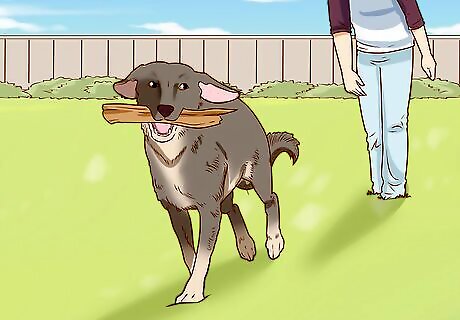
Bring your dog to fun places. Dogs make wonderful companions you can take with you to the places you enjoy, like parks, beaches, or even just around the neighborhood. Your dog will enjoy excursions just as much as you, and taking it along is a great way to bond and have some fun together. If you take your dog along in the car, open the window so it can enjoy the air. Just make sure it's not down so far that the dog can jump out. If you take your dog along to places you like, make sure you follow leash rules and pay attention if dogs aren't allowed in a certain place.
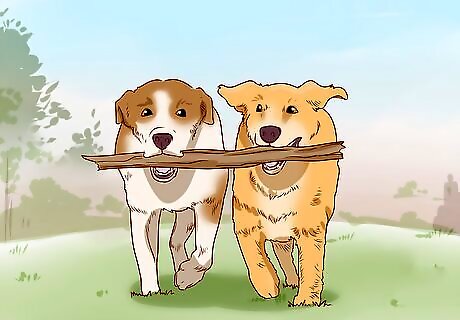
Socialize your dog with others. If your dog spends time around lots of other people and dogs, it will learn to be friendly and social. A good way to socialize your dog is to take it to the dog park, where it will get a chance to play with other dogs and dog-friendly owners. Many dog parks are members-only, requiring pet owners to fill out an application before they're given a pass to enter the park. This is to make sure that all the dogs in the park have received their shots and prevent the spread of disease.










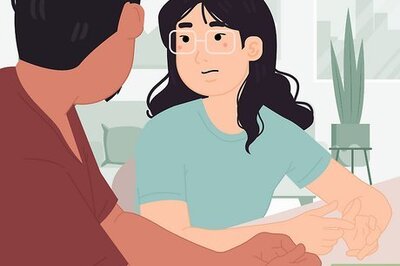


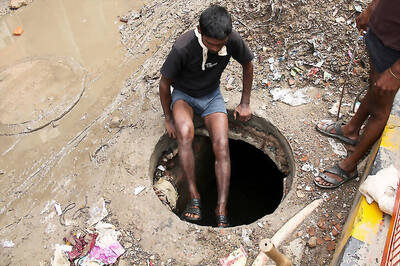





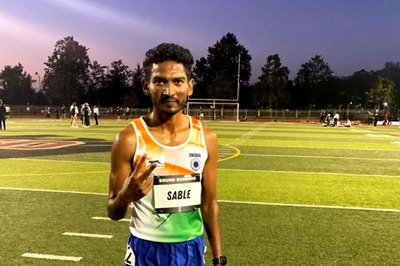
Comments
0 comment